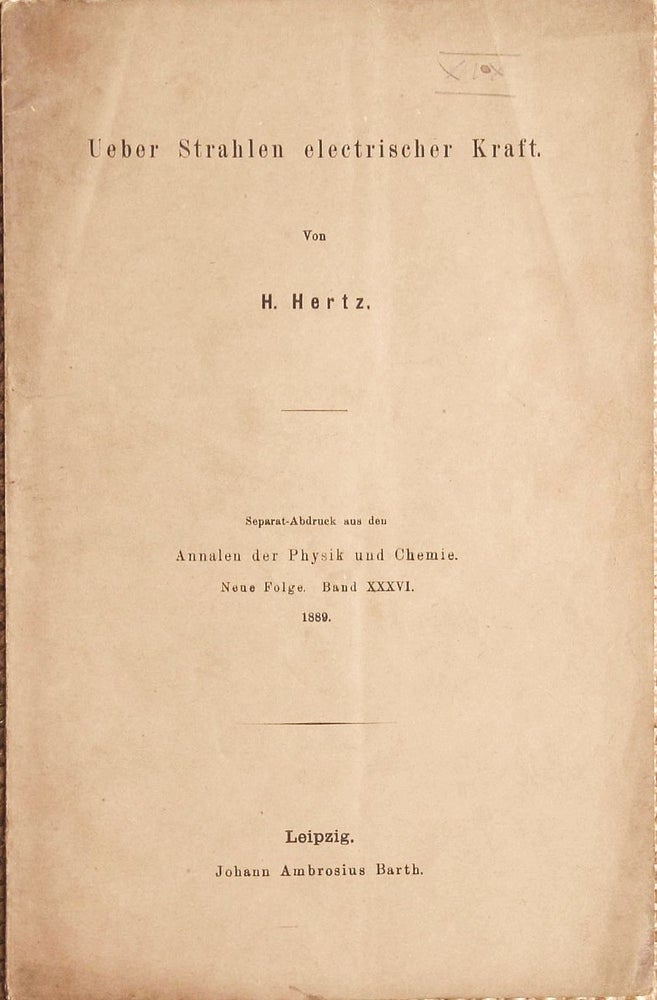
Rare offprint issue
Ueber Strahlen electrischer Kraft.
1889.
1st Edition. Soft cover. Very Good. Item #101560
RARE OFFPRINT IN FIRST EDITION from: Annalen der Physik 36, neue Folge, 1889, pp. 769-783, 1 plate. In original printed wrapper, browned. -
The text of a lecture on electric waves delivered 13 December 1888, it relates qualitative experiments undertaken by Hertz, at the Karlsruhe Polytechnic, on the analogy between electric and light waves. Passing electric waves through huge prisms of hard pitch, he showed that they refract exactly as light waves do. He polarized electric waves by directing them through a grating of parallel wires, and he diffracted them by interrupting them with a screen with a hole in it. He reflected them from the walls of the room, obtaining interference between the original and the reflected waves. He focused them with huge concave mirrors, casting electric shadows with conducting obstacles. This is the first print appearance, preceding its appearance in Annalen der Physik (36, p. 769) because, at this point in his career, Hertz was sending his papers to Hermann von Helmholtz to communicate to the Berlin Academy for quick publication before sending them to Annalen der Physik. It was later collected with Hertz's other experimental and theoretical works on electricity in Untersuchungen uber die Ausbreitung der elektrischen Kraft (Leipzig, 1892), which expanded and clarified the electromagnetic theory of light that had been put forth by the British Physicist James Maxwell in 1884. Hertz's experiments with electromagnetic waves led to the development of the wireless telegraph and the radio. (D.S.B.).
Price: 720 € * convert currency
Delivery time up to 10 days. For calculation of the latest delivery date, follow the link: Delivery times
Lieferzeit max. 10 Tage. Zur Berechnung des spätesten Liefertermins siehe hier: Lieferzeiten

